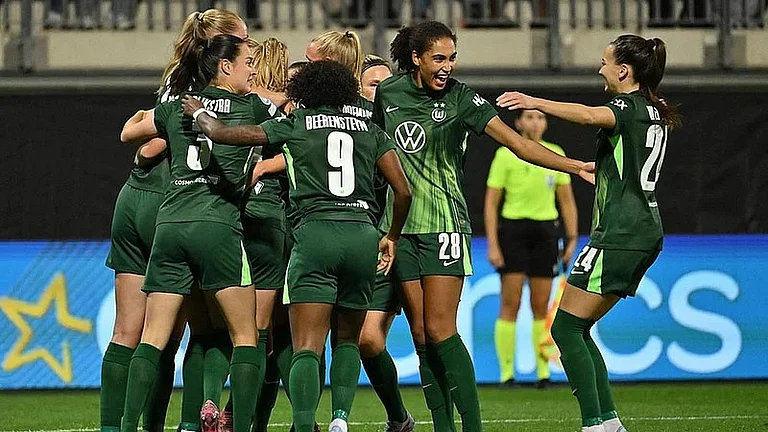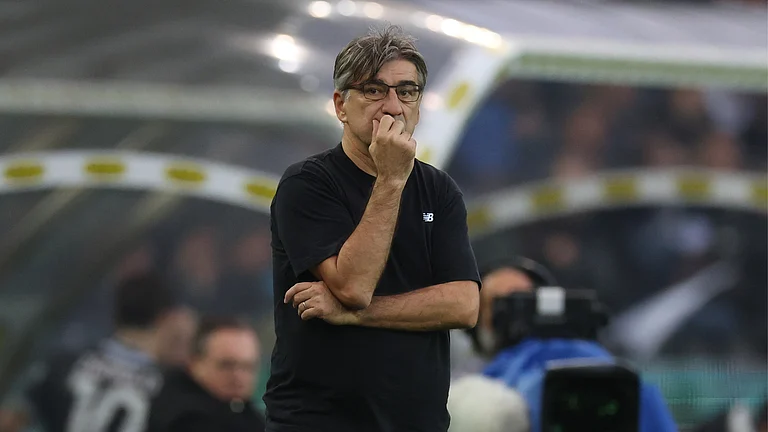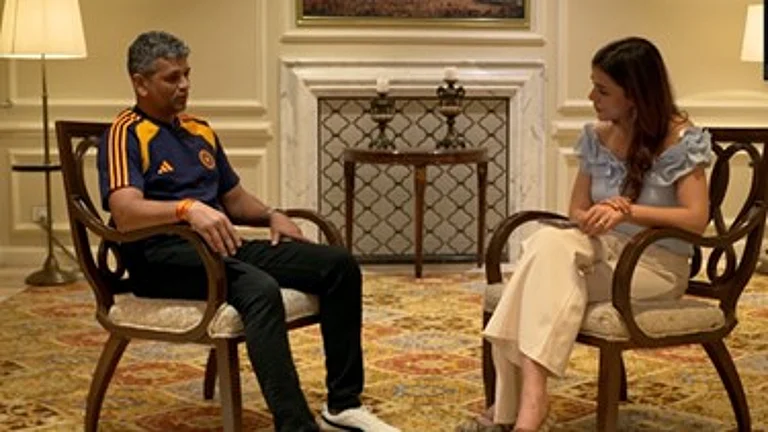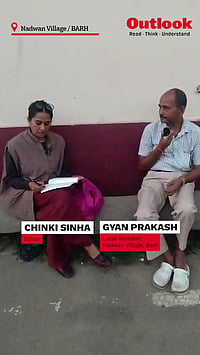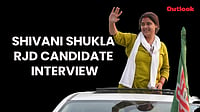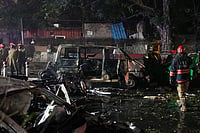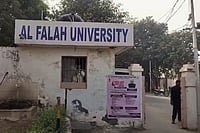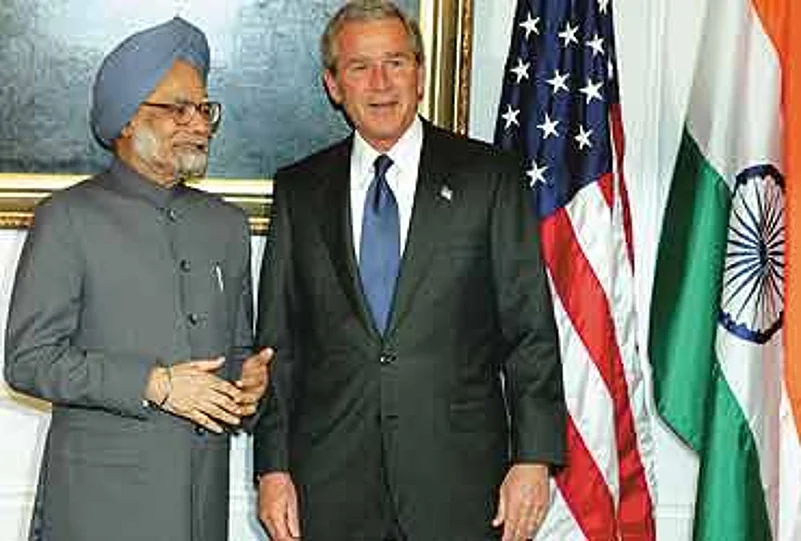
Manmohan Singh's plate was full with a breakfast meeting with a high-on-polls President George Bush, an encounter with President Pervez Musharraf, a visit to the New York Stock Exchange—the first by an Indian prime minister—a luncheon with American CEOs, a foreign policy speech to the pundit community and a summit meeting of the newly-minted G-4 with Germany, Japan and Brazil to mobilise support for the expansion of the UN Security Council. In between, he went to lay a wreath at Ground Zero, a gesture that connected him to the leitmotif of Bush's election campaign. The subtext: we recognise your pain in these trying times of terrorism.
The centrepiece of the visit was the meeting with Bush. Here the soft-spoken Sikh was faced with the plain-speaking Texan, who, for all his dangerous adventurism in India's neighbourhood, is enthusiastic about forging close partnership with New Delhi. Establishing rapport at the top level was crucial, for Bush is a 'one-to-one man' who prefers personal meetings. Swaggering on a surprisingly successful campaign and a struggling political rival, it might just be Bush that Manmohan will do business with for four more years. But covering all bases, Manmohan also tried to talk to John Kerry and commiserated with Bill Clinton, the ailing icon of the Democratic Party.
The Indo-US courtship, which gained passion under the BJP-led government, is threatening to bloom into a full-blown affair. Bush made time for India on a full day jammed with world leaders demanding a slice of the American pie. Munching quiche and fresh fruit, the two agreed that Indo-US relations have never been closer than they are today. They decided to put more meat on the relationship—more dollars and cents in high-tech sales. India, meanwhile, wants the removal of US sanctions on the remaining 14 Indian companies and government departments, including the Bhabha Atomic Research Centre. Interestingly, Manmohan did not ask nor did Bush commit to supporting India's bid to be a permanent Security Council member.

But there was so much packed in that one hour, it prompted a senior US official to comment the same plate would have taken a month to finish with the pause-filled parleys of Manmohan's predecessor. Satisfied, the Dante-spouting Manmohan went to the NYSE to speak to CEOs with a combined worth of $850 billion. India's ambassador to the US, Ronen Sen, had issued a "CEO only" invitation, ensuring no small-timers entered.Given the persistent fears of US companies about his Left partners, the PM spoke convincingly about wrapping the poor in a blanket of wider and more inclusive economic reforms. He asked for a helping hand from the corporate stars while assuaging their fears about the longevity of reforms. Whether the hard-headed CEOs actually respond to India's need for $150 billion over 10 years remains to be seen.
But a visible achievement was the conclusion of the long-brewing, closely-guarded deal on increasing India's access to America's high technology. Weighed by the esoteric title of Next Steps in Strategic Partnership (NSSP), the two sides concluded Phase I of the agreement which will allow sale of dual-use items in exchange for Indian assurances to protect and honour US requirements. Three sets of documents were signed and exchanged between foreign secretary Shyam Saran, US undersecretary of commerce Ken Juster and undersecretary for political affairs Marc Grossman. After a year of sometimes contentious parleys, India agreed to give assurances which extend to US technology bought even from third countries. Saran called it a "landmark" achievement while Juster told Outlook it was a "transforming event in the relationship".
This delivery took more than a year of hard, often painful labour. It was ready exactly a year ago when Atal Behari Vajpayee came to New York but for reasons that continue to escape mere mortals, Indian officials asked for a delay without citing any specific reason. When Bush and Vajpayee did announce the NSSP in January, it was as broad generalities. The mass was missing from the matter, as new doubts created hurdles.
The two bureaucracies battled on as they tried to align India's desire for high technology with American concerns on proliferation. What the US thought perfectly perfunctory, India saw as intrusive and potentially sneaky. The issue of 'trust' became a thorn. Indian officials asked why the Americans couldn't trust India despite its "impeccable record" on non-proliferation but Americans cited their law, adding that even the British have to sign the same papers.
The new government took a while to get familiar with the nitty-gritty but brought new concerns to the table. On June 23, Juster met national security advisor J.N. Dixit in New Delhi in what was described as a "breakthrough" meeting; Dixit reiterated his commitment in a subsequent meeting with deputy secretary Richard Armitage. But differences arose over the "inspection issue"—Indian officials feared the US could use the cover of inspections to spy on sensitive facilities. In addition, the new Indian team and its new eccentricities tried "to do one better than the BJP in terms of getting more for less", according to a US analyst. The Americans cried foul, alleged India was trying to change the ground rules and it could kiss the whole thing goodbye.
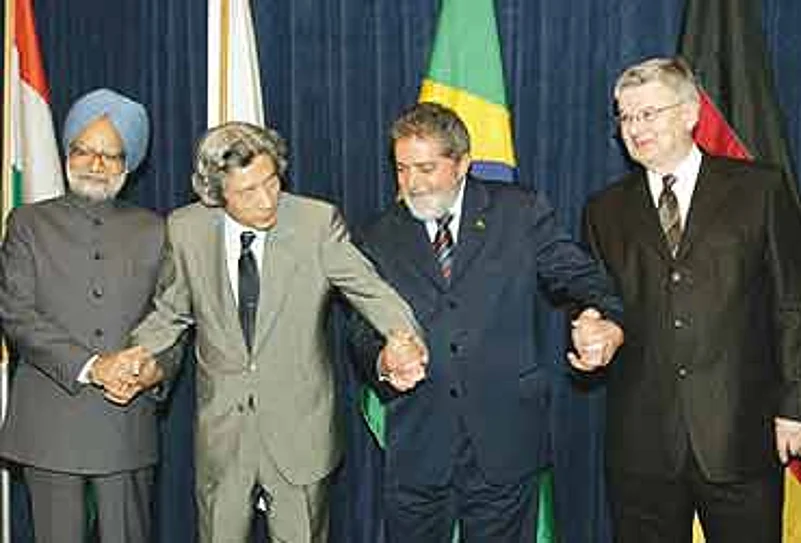
As recently as two months ago, White House officials were said to be "radioactive" over what they claimed were stalling tactics. A US official complained how he had been cut off at the knees after going out on a limb to bat for India. Someone else was heard commenting, "If this is what their attitude is, they deserve John Kerry." The clear implication was that a Democratic administration will be harder, not softer on US requirements.
The talks hit a new low as late as last month when S. Jaishankar, joint secretary (Americas), came to Washington with a brief, allegedly from foreign minister Natwar Singh, described as "untenable" by the US side. India was seen as trying to "renegotiate" an agreement the political leaders had already signed on. Indian officials now say they were merely "trying to offer radical solutions" to break the logjam. Juster, the prime mover of the process on the US side, reportedly gave a "forceful", 45-minute presentation.The message got back to Delhi loud and clear.The "troika" of Dixit, Saran and ambassador Sen then swerved around the old guard, moved in and took over the reins. The US side made some changes and the draft was finally ready after many battles between the "ayatollahs of commas and hyphens".
Having completed Phase I, officials say preparations for Phase II are in motion. There are elements of nuclear, space and high-tech cooperation in each phase, opening new doors at each stage. But perhaps the most important gain for India is its recognition as a de facto nuclear power by Washington. "These are stepping stones to India being accepted as a responsible nuclear power. No matter what the legal constraints are, at a practical level, the successful culmination of the NSSP will lead to a change in how India is perceived," a US analyst told Outlook. It ties nicely into the ambition for a permanent seat in the UN.







